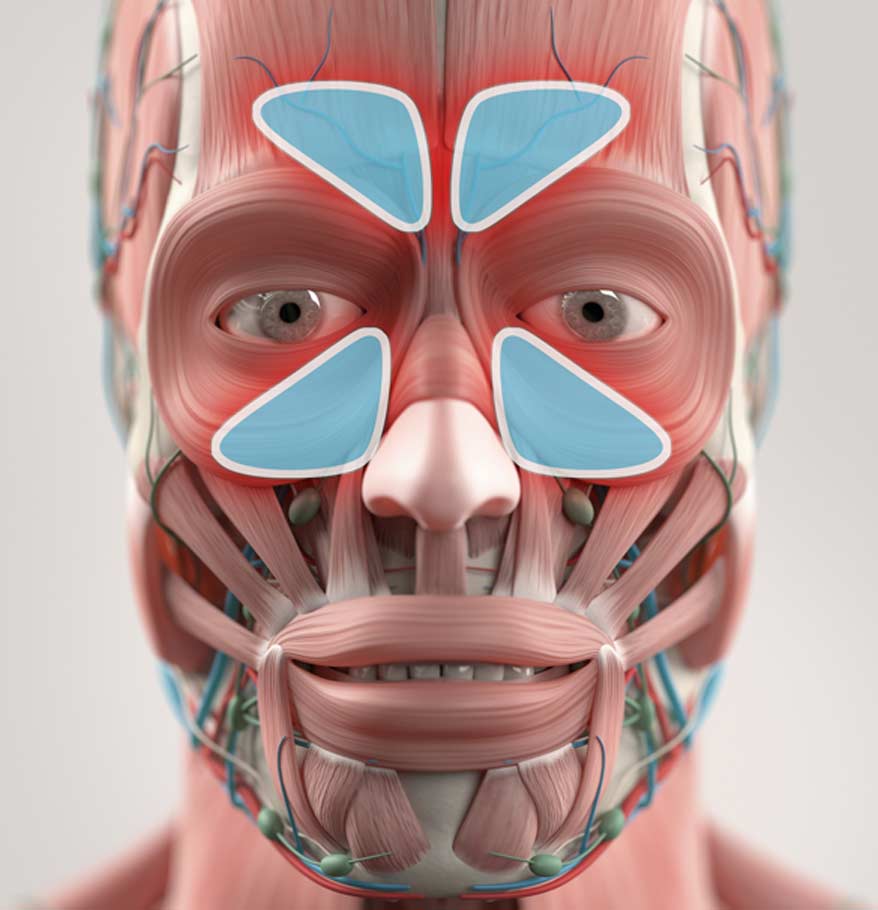

Sinus surgery is the surgical treatment of chronic sinus infections, and indicated when medications are not able to completely resolve the problem.
It is a minimally invasive approach to open the sinuses and help individuals feel better. It’s performed through the nostrils with the aid of specialized small telescopes and delicate instruments.
The main purpose of sinus surgery is to remove infected, obstructive tissue and/or create wider passage openings to improve drainage. There are various types of sinus surgery that can be performed. Dr David Shamouelian, your Board Certified ENT specialist (otolaryngologist), will recommend the sinus surgery that will be most effective for you.
Who is a Candidate for Sinus Surgery?
About 35 million Americans are affected by sinusitis at least once each year. Common causes of sinusitis include:
- The common cold
- Seasonal Allergies
- Nasal polyps, which are inflammatory growths in the lining of the nose
- A deviated septum
Individuals with sinus disease commonly report:
- Facial pain or pressure
- “Stuffed-up” nose
- Runny nose
- Thick, green, or yellow nasal discharge
- Loss of sense of smell
- Cough
- Bad breath
- Fatigue
- Dental pain


A simple sinus infection can be effectively treated with nasal sprays and saline nasal washes. Bacterial sinusitis will likely require a 10 to 14 day course of antibiotics and in some cases, individuals may need to take a course of steroids along with antibiotics.
Infections that do not respond to medicines may require sinus surgery to clean the infection and open the nasal ducts.
Sinus Surgery Procedure
Sinus surgery is usually an outpatient procedure that is either performed under local or general anesthesia, depending on the type of surgery the surgeon decides is most suitable. Sinus surgery is performed with no cuts to the outside surface of the face. Sinus surgery is performed with a thin, narrow rigid telescope that magnifies the inside of an individual’s nasal passages with HD quality images.
There are 2 modes of sinus surgery:
- Functional endoscopic sinus surgery (FESS): With the aid of a magnifying telescope, the surgeon carefully removes diseased sinus tissue, polyps, and obstructive bone with small, delicate instruments to enhance the opening of the sinus passages in order to facilitate the sinus drainage pathways.
- Balloon Sinuplasty: With the aid of a magnifying telescope the surgeon carefully dilates the native passages and tissue is not removed. This approach is used when there is lesssinus disease, and no polyps. With this approach small balloons are used to enhance the opening of the sinus passages in order to facilitate the sinus drainage pathways.
Either approach can be assisted with image guidance, the use of CT scan imaging to produce 3-D images that help the surgeon avoid injury to vital nerves and vessels.
Sinus surgery may require 1 to 3 hours. Upon completion individuals are transferred to the recovery room and eventually discharged with post-surgery instructions.
Preparing for Sinus Surgery
It is important to stop taking all anti-inflammatory medicines (like aspirin, ibuprofen, naproxen, etc.) two weeks prior to sinus surgery. In addition, stop all herbal supplements and vitamins two weeks prior to surgery.
Surgery is performed on an empty stomach, therefore no food or beverages after midnight prior to surgery.
On the day of surgery, the individual undergoing sinus surgery will require someone to accompany them to the surgery center and transport them home after surgery. Most individuals require assistance for the first few days after surgery.
Sinus Surgery Recovery
Generally, after sinus surgery, dissolvable packing materials are used to reduce bleeding. Individuals may expect minimal swelling and pain. Bruising of the nose and eyes are not expected after surgery. Most individuals only require prescription pain medications for the first 2-3 days and are also given a prescription for oral antibiotics.
It is normal to have mild bleeding from the nose for the first 72 hours. It is a good idea to keep one’s head elevated with pillows while sleeping the first 72 hours for comfort measure.
Within 24 hours of surgery, individuals should start saline nasal irrigations 2-4 times daily to remove clots and mucus.
Individuals that undergo sinus surgery usually require minimal time off from work/school and many are able to return back to their daily routine within a couple days. In fact, patients that undergo balloon sinuplasty are able to return to work the next day. After sinus surgery, individuals are instructed not to blow their nose and to sneeze with one’s mouth open to reduce the risk of bleeding. Strenuous physical activity (yoga, running, weightlifting) should be avoided for approximately 10 days to reduce the risk of bleeding.
During the first post-operative visit, the surgeon cleans the nose passages, removing remaining clots and retained mucus. Individuals can expect to feel better within a few days after balloon sinuplasty but healing may take up to six weeks after functional endoscopic sinus surgery depending on the extent of surgery.
Risk of Sinus Surgery
Sinus surgery is a safe procedure, but like every surgery, there are risks associated:
- Bleeding: may require intervention to stop the bleeding
- Worsening or minimal improvement in the nasal airway with the need for further intervention
- Intranasal scarring may impair the nasal airway and require cutting the scars which are typically performed in the office.
- Loss of the sense of smell
- CSF leak due to injury to the skull base
- Injury to the eyes resulting in vision impairment.

